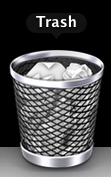2013 was an “interesting” year in Toronto municipal politics. For months, Mayor Rob Ford denied May allegations of crack cocaine use. He had to – media reports claimed that somebody shot a video of him smoking crack.
Those allegations lasted until October, when Toronto police reported that they had retrieved certain videos. Shortly afterward, Mayor Ford admitted to using crack cocaine.
Largely lost in the sensationalism was a little-known fact about computer files: simply deleting them from your computer does not mean they no longer exist.
What it does mean is that the computer can no longer find those files. It can overwrite those files if it needs to, but until it does, the files still exist.
Computer forensics experts on the police force retrieved such “deleted” files from the hard drive of a computer seized during drug raids and, on October 29, 2013, they found a smoking gun that led to Mayor Ford’s admission of drug usage.
It doesn’t matter whether the computer in question was a Windows PC that has a Recycle Bin
or a Mac and its Trash Can,
neither tool “permanently” deletes files. Indeed, simply placing them in the bin/trash keeps them available for use. And when you empty these receptacles, your computer “forgets” where the files are. But until they’re overwritten, they still exist, and computer forensics technicians or similarly savvy people can find them.
Do you want to permanently delete any files on your drive? If you do, you need to take extra steps.
Windows users can download various utilities to permanently delete files. On the Mac, there’s a built-in way to permanently delete files. In either case, the process takes a while to complete, but once it’s done, your deleted files cannot be recovered – they’re scrambled beyond legibility.
To permanently delete files on the Mac, follow these steps:
- Place files you want to delete in the Mac’s Trash Can.
- From the Finder menu, choose Secure Empty Trash.
These tips only help you permanently delete files that exist on your computer’s drive. If they also exist on a backup drive or in the cloud, on services like Dropbox or SugarSync, you need to delete them there as well. Read the online user manuals and terms of service for the services you use to determine how “permanently” those files are deleted.
Here’s a good description of how Trash works on the Mac. The same principles apply to Windows-based computers.

